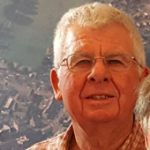
Demo interview
My final schooling was at the Junior Technical College at the Forest of Dean Mining & Technical College in Cinderford. I left school and started an engineering apprenticeship with the Gloucester company, Fielding & Platt Ltd. Two year after I had finished my apprenticeship things were not looking good work wise at Fielding & Platt.
So one Sunday night in the pub, a friend who worked at Mitcheldean, suggested I should try Rank Xerox as they were recruiting. A phone call on the Monday morning secured an interview later that week for a design engineering job. I attended the interview with personnel and Jeff Kew, one of the design managers and was offered a job the same day.
So in April 1967 I started work in the design department which at that time was located in the admin building up on the ridge but which moved into the luxurious new design building 38 just three weeks later.
I initially worked on the 2400 copier and then the development of the 3600 copier. Jeff Kew was the manager, Mervyn Thomas was the section leader and the engineering team was Vernon Brookes, Clive Brain, Dick Wright, Roger Roberts, Norman Masters, John Millwater and apprentices Lionel Fisher and Roger (Sid) Pearce.
This was interesting work as the 2400/3600 was being produced in high volumes and we had to work closely with the service group at Denham. I then moved to work with a small team led by John Dennis on a Mitcheldean designed product that never made it to the market, the RX1500. This was based on the 914/720 copier but with a developer and fuser system similar to the 3600 and completely new modern casings. This product was seen as a way to refurbish and reuse the many thousands of second hand 914/720 machines that were in store. The 1500 project was eventually cancelled and then I worked on the new 4000 copier for a short time.
At this time about 1971 the company advertised for a liaison engineer to be based at Fuji Xerox in Japan. I applied and was most surprised when I got the job. It took many months before I travelled out to Japan. In the interim I took a Japanese language course in London and spent time working in, meeting the staff and understanding every department at Mitcheldean, Welwyn Garden City and Venray. Finally in April 1972 I flew to the U.S.A. to spend three weeks at Xerox Corporation on my way to Tokyo. I eventually arrived in Tokyo and started a daily commute driving from the old capital city of Kamakura to the very new main Fuji Xerox plant at Ebina. After a few months I moved to a good suburb of Tokyo where life was very interesting and I soon had a good circle of friends. I drove out of Tokyo each day down the motorway to Ebina but also from time to time visited the head office in Akasaka and the other factory at Iwatsuki. At this time I was the only foreigner at the Ebina factory and I had a very interesting life working on and liaising with the Japanese engineers and management. I did everything from proof reading documents in English to attending senior directors meetings. During this time in Japan I met and married my Japanese wife, we have now been married for more than 43 years, so a very good souvenir of my time in Japan! Eventually my residency in Japan came to an end and I returned to Mitcheldean in January 1975.
Back at Mitcheldean I worked on engineering planning for Ray Pyart for a few months before getting involved with the 9200 duplicator and in particular the conversions we made for the Japanese market. The Fuji Xerox 9200 and later the 9400 were all built at Mitcheldean and shipped to Japan. In September 1980 I was appointed as an engineering resident to Xerox Corp. in Rochester where I was part of the engineering team on what was called Chainsaw project which eventually became the 8200 duplicator, I was responsible for ensuring the European requirements of Rank Xerox were incorporated into the basic design. During this period I worked in the small town of Webster up on Lake Ontario. My family was with me and we enjoyed two years of a very good and interesting life. So in October 1982 I arrived back in Mitcheldean and continued to work on the 8200. Just four weeks after my return, I, together with a major part of the design department was made redundant in what was the first of many redundancy packages. I worked my notice and finally left RX in February 1983. So ended my 16 years at RX, 16 wonderful years I might add.
After I retired and moved back to Ross-on-Wye I got involved with old RX friends and the History of RX at Mitcheldean project in 2015.
